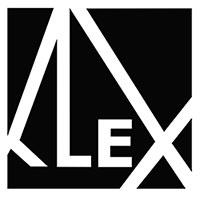BERLINALE SPOTLIGHT SHORTS GO ABROAD 2015
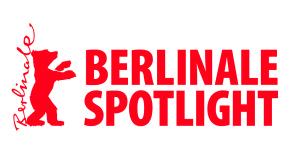
Curated by Maike Mia Höhne
A selection of short films of the Berlin International Film Festival 2015 is travelling to Asia as part of the “Berlinale Spotlight” series of events. The Berlinale Spotlight films are uncompromising and complex, and offer an undisguised image of the present. For Berlinale Spotlight curator Maike Mia Höhne, the value of these short films lies in their connection of fiction and reality. They open up space for interpretation and communication, going beyond the events that actually take place.
This year’s edition features many different styles of film, from documentaries to fictional stories and animated movies. Central themes are personal life stories and rituals portraying longing, love, cruelty and the absurd. Some of the films provide food for thought, others open up a whole new world to the viewer. They show life on another planet, but also the earthly dangers emanating from humans and the power of nature. One movie, shot in a Syrian refugee camp, critically examines the position of the filmmaker: an outside observer, eager to tell a story, he is at the same time forced to encounter the refugees’ reality.
The Berlin International Film Festival, more commonly known as Berlinale, ranks among the most important film festivals in the world. Movies of all genres, lengths and formats are awarded. Since 2007, the Berlinale Shorts also awards prizes to short films, mostly works of talented young artists. (Goethe Institut Hanoi)
Curator:
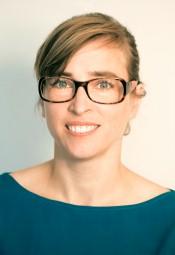
Maike Mia Höhne has curated Berlinale Shorts since the summer of 2007. She was born in Hanover in 1971. Between 1994-1999 she studied visual communication at the Hochschule für Bildende Künste in Hamburg, the Escuela de Bellas Artes in Havanna as well as the Escuela International de Cine y Television in San Antonio de los Baños, Cuba. After working in Buenos Aires, Argentina, she completed her post-graduate studies at the Hochschule für Bildende Künste in Hamburg with a focus on film. Since 2001, she has worked in as a freelance writer, curator, producer, photographer and director in various contexts. Her films are distributed by arsenal experimental and Kurzfilmagentur. She has also been active for many years as a lecturer and moderator at film events. Maike Mia Höhne lives in Hamburg and Berlin.
(Photo by Simone Scardovelli)
PROGRAMME I – STRANGER THAN PARADISE

PLANET ∑ (2014)
12:00 min
Momoko Seto, France
The universe in all its infinitude. On planet Sigma, enormous creatures are trapped inside the ice. And then, all of a sudden explosions erupt from subterranean volcanoes. The ice begins to melt; a global warming concludes the giants’ deep slumber and new life begins. The creatures crawl forth, out of the ice. With the aid of slow motion, Seto fictionalises the unfolding of events. Liberated from time and space, she draws ever closer to the proceedings, in extreme close-ups. PLANET ∑ is the third part of her planet series.
Momoko Seto: Born in Tokyo, Japan in 1980, where she attended the Lycée Français before studying art at the École Nationale Supérieure des Beaux-Arts in Marseille and at Le Fresnoy Studio National des Arts Contemporains in Tourcoing in northern France. She works as a filmmaker for the Asia Network (Réseau Asie, CNRS) alongside regularly making short films which have screened at numerous international festivals. PLANET Z screened in the Berlinale Shorts Competition in 2011. She currently lives and works in Paris and Tokyo.
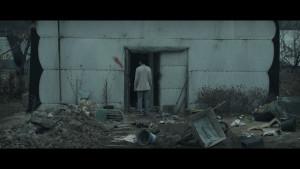
HOSANA (2014)
25:00 min
Republic of Korea, NA Young-kil
Hosanna is an ancient cry of jubilation and entreaty, which according to the New Testament, was used by the crowds greeting Jesus when he rode into Jerusalem on a donkey. In a remote village in Korea lives a boy with the power to heal. He can resurrect the dead. And that is exactly what he does. Curing people of death, he gives them back life. However, the new life doesn’t cure them, on the contrary. Rejecting the chance proffered by rebirth, the fighting, killing and murder continue. They punish, spit upon and antagonise the boy. Refusing to be deterred, he goes his own way. The boy and the villagers move about in rigorously framed shots, practically devoid of emotion. There is no cry of jubilation.
NA Young-kil: Born in South Korea in 1983, he studied at the Calvin University in Yongin, South Korea, and then from 2005 at the Korea National University of Arts where he began making short films. He graduated in 2014.
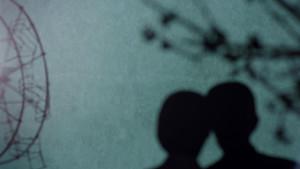
PEBBLES AT YOUR DOOR (2015)
18:00 min
Vibeke Bryld, Denmark
“If we all lived in paradise, there wouldn’t be any tears or separation, no hunger and no waiting, no suffering and no oppression, no war, no death. We’d no longer need hope. We’d lose all those hopes we so dearly love. We Koreans call hope ‘Han’.” (Park Kyong-Ni) Harmonia lived a happy life in North Korea, until one day in her early twenties when she realised the truth. A truth, she says, that she did not want to accept for many years: that which surrounds her is a fractured paradise. Late, but not too late she hopes, she sets out on the solitary path into the unknown, to the world beyond the narrow borders of the North Korean regime. She flees via China to South Korea. It takes almost a year before she arrives. She comes too late. But there is no returning. Director Vibeke Bryld uses photographs and postcards to piece together Harmonia’s life.
Vibeke Bryld: Born in Denmark, she is a filmmaker and writer. She studied in London and Copenhagen and has a BA in Literature and an MA in Documentary Filmmaking. She has directed short documentaries for Al Jazeera English, a few experimental documentaries and TV series. Her last film, BEDTIME STORIES, was nominated for best short documentary by the Danish Film Academy. Until September 2014 she was editor in chief of DOX, the European Documentary Magazine.
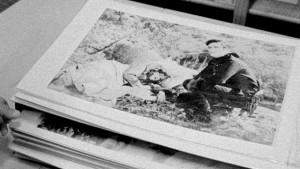
SHADOWLAND (2014)
15:00 min
John Skoog, Sweden
Desolate landscapes are the protagonists. Sound fragments dictate the direction. The drama could begin at any moment. During his travels through America’s West, filmmaker John Skoog discovered a new country. In SHADOWLAND, one view of a Californian landscape chases another. Slowly, almost imperceptibly, the landscapes flow into each another. Deserts become forests become water, the street from a car, the river from a boat. Shot on 16mm and in black and white, the montage induces an analogy that recalls the photographs of Ansel Adams and Alfred Stieglitz. SHADOWLAND is an experimental arrangement in which the shift of perceived understanding occurs on a visual and auditory plane. The places visited in the film were once used by Hollywood as substitutes for entirely different locations in the world. The journey is accompanied by a collage of sounds taken from early Hollywood films.
John Skoog: Born in Malmö, Sweden in 1985, he graduated from the Städelschule, Staatliche Hochschule für Bildende Kunst in Frankfurt am Main, Germany.
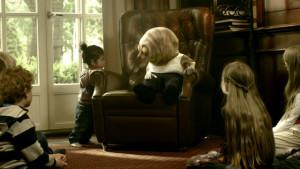
DISSONANCE (2015)
17:00 min
Till Nowak, Germany
What is reality and what is imagination? Who defines the boundaries? A gifted pianist plays piano. The piano reflects the pianist’s emotion, exploding every dimension. As does the emotion: the man misses his daughter, is no longer allowed to see her. Had the man seen a doctor however, he would most likely have been diagnosed with a psychosis. Would, should, could. He lives on the street. The mother is worried, as the man who was once her husband sinks ever deeper. What kind of world is this, that puts a smile on his face, while inspiring nothing but fear in her? The daughter has no fear. All that remains is longing. In Dissonance, reality and fantasy merge, flow into one another. 3D animation and live action become one. An odyssey through time and space. A modern fairytale.
Till Nowak: Born in Bonn, Germany in 1980, he founded his own studio, frameboX, whilst studying media design at the University of Applied Sciences in Mainz. Since then he has designed numerous light installations for buildings including the Castel dell’Ovo in Naples, the water tower in Neumünster and Osaka Allee at the HafenCity Hamburg. His computer animated projects, which include the 3D-animated short film DELIVERY and the mockumentary THE CENTRIFUGE BRAIN PROJECT, have won numerous prizes worldwide including the 2012 German Short Film Award.
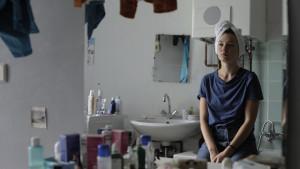
TAKE WHAT YOU CAN CARRY (2015)
30:00 min
Matt Porterfield, USA/Germany
A journey through day and night, night and day. Lilly has been living in Berlin for a while. She is a US American passing through. She has a lover and no penthouse. The relationship is vague. “You come and go as you please”, he says. “What do you mean?”, she asks. “Nothing.”, he says, “I’m happy when you’re here.” – “I’m also happy when I’m here.” Then he plays guitar and she embraces him from behind. Only briefly, then she packs her suitcase. Lilly drifts between worlds and places. Looking for people and connections but remaining in the external. During rehearsals with the performance group Gob Squad, her thoughts and wishes thrive: words become actions. Back at the apartment, a letter from her home awaits her. Matt Porterfield calmly tells of the longing to arrive in quietly composed scenes.
Matt Porterfield: Born in Baltimore, USA in 1977, he studied film at the Tisch School of the Arts, New York University. In 2006, he directed his debut feature, HAMILTON, and participated in the Whitney Biennial in New York in 2012. In the same year he was awarded a Creative Capital scholarship and was artist in residence at the Wexner Center of the Arts in Columbus. Alongside his work as a director and screenwriter, he teaches screenwriting and film production at Johns Hopkins University in Baltimore. Porterfield’s feature films PUTTY HILL (2010) and I USED TO BE DARKER (2013) were both represented at Berlinale Forum.
PROGRAMME II – WHITE FLAGS ARE MORE VISIBLE
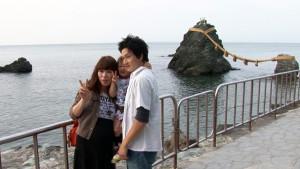
SNAPSHOT MON AMOUR (2014)
6:00 min
Christian Bau, Germany
After the catastrophe in Fukushima, a new Japanese word came into being: Genpatsu-Rikon, a word pieced-together from the characters for “atom” and “divorce”. In 2011, documentary filmmaker Christian Bau travels to the east coast of Japan to investigate this newly coined word. What did the filmmaker see? “I saw everything.” -“You didn’t see anything, nothing at all!
Christian Bau: Born in Hamburg, Germany in 1942, he trained as a photographer before studying film at the University of Fine Arts of Hamburg and at Hornsey College in London. He is a member of the ‘cinema action’ film collective and founding member of ‘die thede’ film society and thede production company. He works as a director, cinematographer and producer.
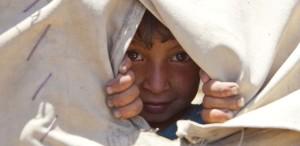
EL JUEGO DEL ESCONDITE [Hide & Seek] (2014)
23:00 min
David Muñoz, Spain
A film crew visits a Syrian refugee camp in Lebanon. The refugees are hiding from the war. The children play hide and seek. The film crew tries to stay in the background; they too are hiding. The theme of El Juego del Escondite is composed of the synergies of reality, fiction and the filming process itself. Contradictions arise when disparate worlds collide at the same time and place. According to theory, reality is an occurrence from which only particular truths are extracted in a film. Thereby, it is expected that a film will sort the events in a particular order of significance. This process destroys reality. Simultaneously, film also wants to be recognised as the only real truth. “As a director I try to observe myself when working, how I behave when the realities of refugees and my own converge. I observe myself, watching how I observe. I feel like a stranger who – also – wants to tell his own story.” (David Muñoz)
David Muñoz: He writes, directs and produces documentary and fiction films, with more than 100 awards in film festivals. Winner of Goya Award to Best Short Documentary for FLOWERS OF RWANDA. His film THE INFINITE JEST was a Jury Award for Best Short Documentary at the Aljazeera Documentary Film Festival. His film ANOTHER NIGHT ON EARTH won the Film Critics FIPRESCI Award at DOK Leipzig. His last short fiction film ABOUT NDUGU was a world premiere at the 63 Berlinale.
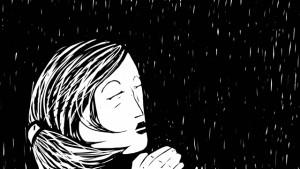
DÄWIT (2015)
15:00 min
David Jansen, Germany
A wolf child, a cat, an angel. Young Däwit suffers violence at the hands of his father. He is eventually rescued and able to flee the place of his abuse. He finds refuge with a family of wolves: a foster child in a modern world. Lost, he embarks on a seemingly endless journey, a journey full of riddles and deprivation. He tries to find himself, his identity – amidst the all-encompassing sorrow. At the end, he flies back to the beginning and finds peace in forgiveness. Filmmaker David Jansen found inspiration for the film in the work of Belgian graphic designer and illustrator Frans Masereel. Processing the most diverse emotions in his woodcuts, Frans Masereel developed a noticeably expressionistic style, in which the symbolic and concrete are interwoven. David Jansen transfers that approach to this animated film, in both form and content. Narration meets association and vice versa.
David Jansen: Born in Wipperfürth, Germany in 1981, he trained as a process mechanic for plastics and rubber technology before taking internships in script development at Columbia Tristar and Sony Pictures. He made his first films during this time and then went on to study animation at the Academy of Media Arts Cologne between 2006 and 2012.

YúYú (2014)
15:00 min
Marc Johnson, France/Spain/USA
In the beginning there is nature. Landscape footage of the “Five Dragons” in the Yangtze Valley, the third-largest river in the world, a Unesco World Heritage site in the Chinese province of Chóngqìng, is coupled with views of the gigantic city of Chóngqìng, which resembles a juggernaut and dominates the valley. The beekeeper Shé Zuŏ Bīn performs a traditional rite of spring on one of the rocks. He allows queen bees to be placed on his body who then summon worker bees. By the end, Shé Zuŏ Bīn’s body is entirely covered by bees. In a kind of trance, he stands utterly still. The buzzing of bees dominates all. He trusts the bees completely, and for a moment they lose all that is dangerous, terrifying. They are a protective shield.
Marc Johnson: Born in Vitry-sur-Seine, France in 1986, he is a Franco-Beninese architect, visual artist and filmmaker. Johnson studied at the École Nationale Supérieure des Beaux-Arts in Paris from 2006 to 2011. In 2007 and 2010, he undertook study visits to Tokyo and Hunter College in New York. Between 2011 and 2013, he resumed his studies in architecture at the École Nationale Supérieure d’Architecture Paris-Malaquais. His works have been exhibited worldwide including in Paris, Brussels, Lahore and Chongqing.
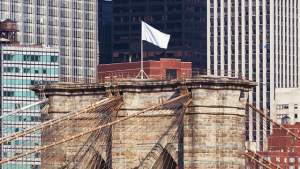
SYMBOLIC THREATS (2015)
15:00 min
Mischa Leinkauf, Lutz Henke & Matthias Wermke, Germany
On the night of 22 July 2014, Matthias Wermke and Mischa Leinkauf hoist two white American flags on the Brooklyn Bridge in New York City. They take the US flags down and fold them in the prescribed orderly fashion. Poetry or threat? An act of surrender or perhaps art? These were the theories that New York puzzled over last summer. How can one incident be interpreted in so many ways? By means of press reports, Symbolic Threats allows the public at large to express their extreme disparity of interpretation. Inspired by the heated debate over the two flags that suddenly appeared on the towers of the bridge, the film asks what kind of societal scope art has in the present day. What happens when threatened freedom reinstates art with the element of danger? Who or what makes it into a threat? Are we safe in the city? What is next?
Mischa Leinkauf, Lutz Henke & Matthias Wermke grew up in Berlin in the 1990s when they learnt to value and utilise the city’s possibilities. A shared enthusiasm for repurposing urban spaces brought the three together early on. Nowadays, they still focus on the same questions and locations in their work, whether it be as ‘filmmaker‘, ‘curator‘, ‘cultural scientist’ or ‘fine artist‘. They create images and mindscapes, tell stories and dissect events – always in the hope of making the unseen visible and of exploring a place’s fixed meaning and potential use.
